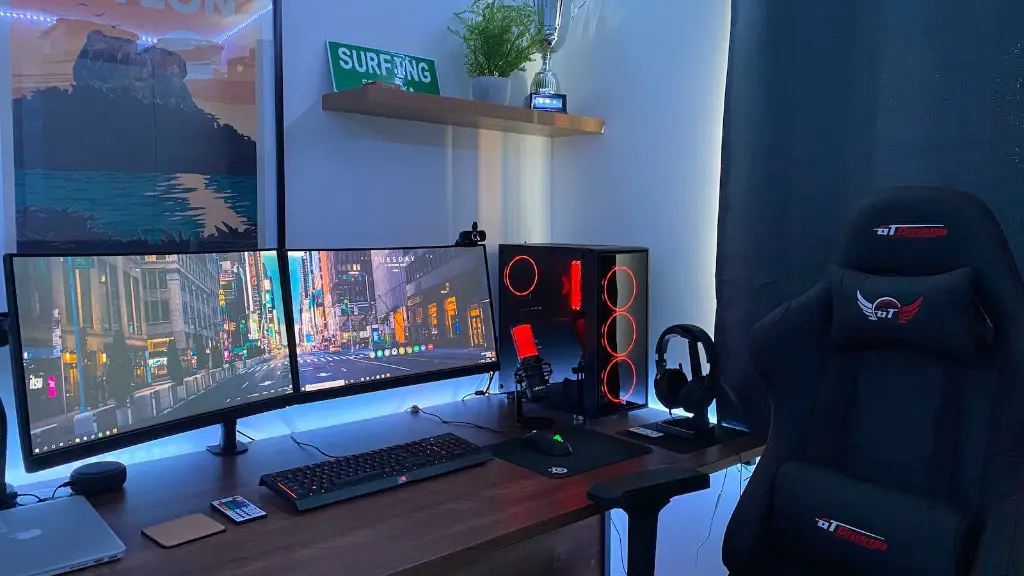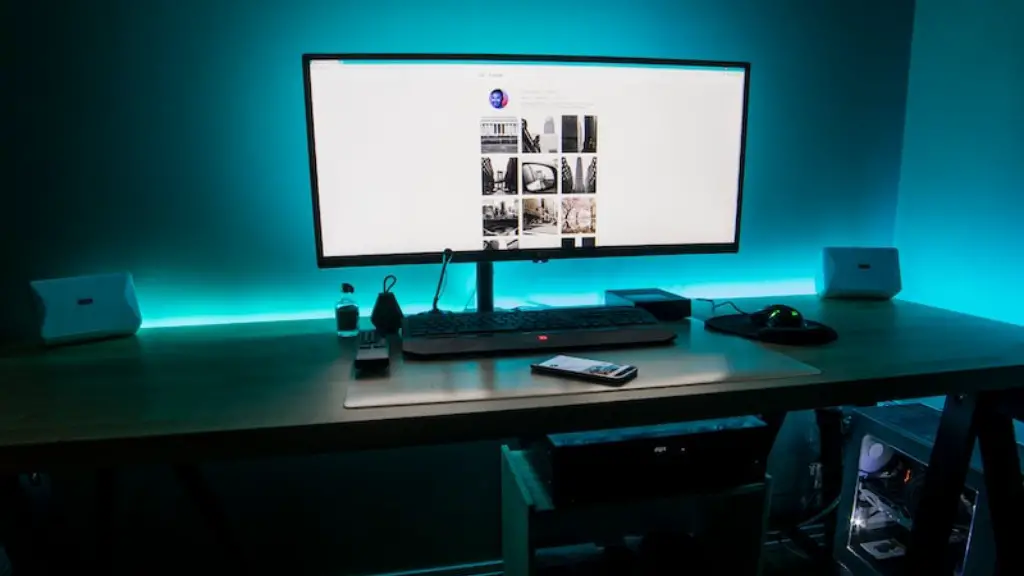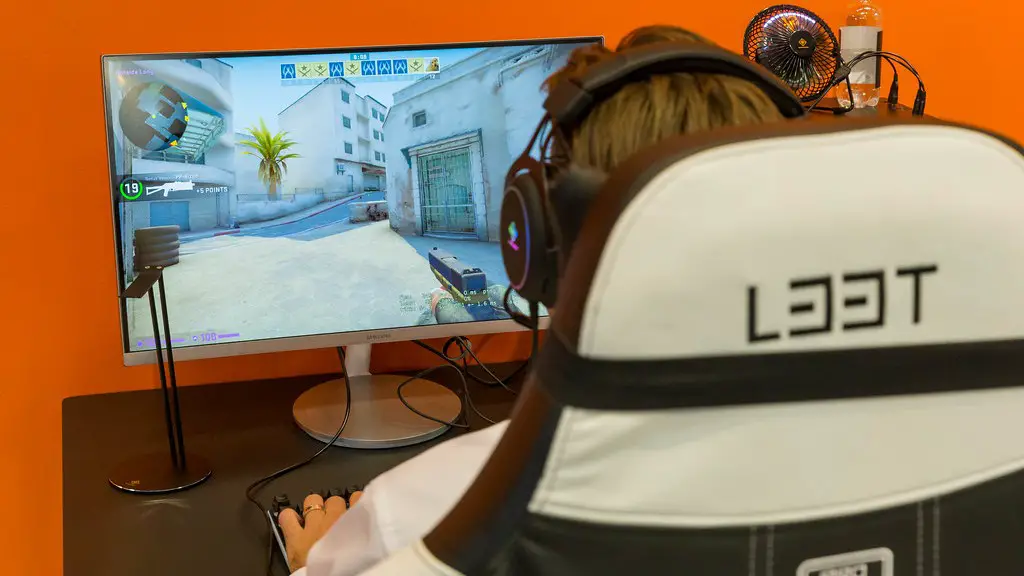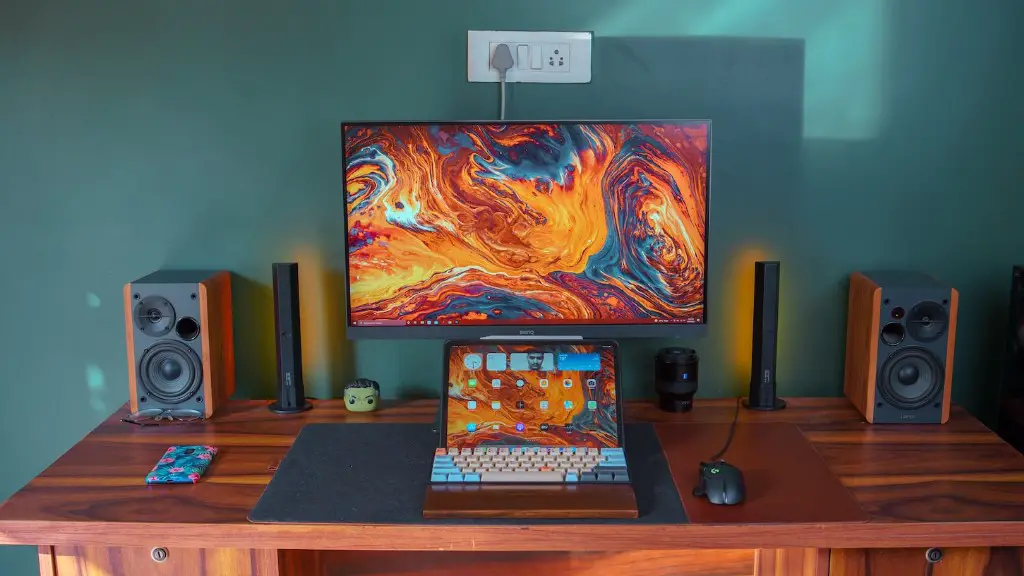With so many options available when choosing a gaming monitor, it can be hard to determine which one is right for you. The right gaming monitor should be one that fits your budget, offers the features you need and delivers a performance on par with your gaming setup. With that in mind, here are a few tips on how to pick the right gaming monitor.
Start by considering the size of your monitor. Generally speaking, larger monitors offer better gaming experiences and usually come with higher resolutions. If you have a large enough space, then you may want to consider investing in a bigger monitor. On the other hand, if you’re tight on space, then you may want to opt for a smaller monitor.
Next, consider the refresh rate. The refresh rate determines how often a monitor can refresh its picture. The higher the refresh rate, the smoother the visuals and gameplay will be. Aim for at least a 75 Hz refresh rate for the best gaming performance.
Another important feature to look for is the response time. This determines how fast the monitor can respond to changes in images, such as shifts in colour or brightness. Look for monitors with a 1ms response time, as this will provide you with smoother visuals.
You should also take a look at the panel type and the resolution. The panel type will determine the brightness and colour accuracy of the monitor, and the resolution determines how clear and crisp the visuals will be. Aim for a minimum resolution of 1080p, but if you have the budget, get one with a 4K resolution.
You should also look at other features that may be beneficial, such as enhanced contrast ratios to make colours seem crisper, adjustable stands to make the monitor more comfortable, and built-in speakers for gaming. It’s also worth considering any special features such as G-Sync compatibility or HDR support.
Finally, make sure you look at the price and the warranty. A pricier monitor usually comes with better features and a longer warranty, so it’s worth the extra money if you want the best gaming experience. After all, you want to enjoy your gaming setup for years to come.
Defining Your Needs
To ensure you pick the right gaming monitor, it’s essential to have a concrete idea of your needs. Start by defining the purpose of the monitor. Are you a serious gamer? An occasional gamer? If so, what kind of games do you primarily play? These questions can help narrow down your options and make it easier to pick the right monitor.
You should also determine the size of the monitor. This will depend on the type of gaming experience you’re after, as well as the physical space you have available in your home. If you’re looking for a more immersive gaming experience, then a larger monitor with a high resolution will be the best choice.
For games that require quick reflexes, a refresh rate of at least 75 Hz is recommended. The higher the refresh rate, the smoother the visuals and gameplay will be, so it’s worth considering monitors with higher refresh rates. Keep in mind that a higher refresh rate will increase your cost, but it will be beneficial for gaming.
Finally, take a look at the response time of the monitor. This will have a direct impact on how fast the screen can respond to changes in images, such as shifts in colour or brightness. Monitors with lower response times, ranging from 1ms to 4ms, will provide the best performance for gaming.
Understanding Features and Specifications
Do some research on the features and specifications of gaming monitors, as this will give you an idea of what to look for when making a purchase. The most important factor to consider is the panel type; this will determine the brightness and colour accuracy of the monitor. A higher quality panel, such as IPS or VA, will provide better visuals and gaming performance.
The resolution is also important, as it determines how clear and crisp the visuals will be. If you have a budget, aim for a minimum resolution of 1080p. However, if you’re looking for a real gaming experience, then you may want to consider buying a 4K monitor.
Other features you might want to consider are adjustable stands and built-in speakers. Adjustable stands allow you to adjust the position of the monitor to make gaming more comfortable, while built-in speakers add another layer of immersion to your gaming experience.
Finally, it’s worth considering any special features that may be available on certain monitors. G-Sync compatibility is a great option for gamers who want silky smooth gameplay, and HDR support adds another layer of vibrancy and clarity to visuals.
Comparing Monitors
Once you’ve identified the features and specifications you need, it’s time to start comparing different models. Make sure to compare different monitors side-by-side in order to get a better idea of which one meets your needs. Look at the size and resolution of each monitor, as well as the features and prices.
It’s also important to look at the warranty that comes with each monitor. A longer warranty is a good indication of the quality of the monitor. You also want to make sure the monitor is compatible with your gaming setup, as some older monitors may not work with newer hardware or games.
More expensive monitors will come with higher resolutions, larger sizes and better features, so it’s worth checking them out if you can afford it. Ultimately, you should pick the monitor that best fits your gaming needs, budget and the size of the space you have available.
Additional Information
It’s important to stay informed about the latest developments in gaming monitors, so do some research on the topic. Read reviews from tech websites and gaming forums, as this will give you an idea of what different monitors have to offer. It’s also worth paying attention to any discounts or promotions that may be available on certain monitors.
Look for gaming monitor sets that have been verified by independent reviewers and tested by real users. This will give you an unbiased opinion of which monitors are the best, and which ones should be avoided. You should also look at customer service ratings to see how responsive each monitor manufacturer is.
If you’re having trouble deciding between two different monitors, ask questions in gaming forums or consult with an expert. Try to find someone who can answer your questions in an objective and knowledgeable way.
Finally, don’t forget to factor in ancillary costs. If you’re buying a larger monitor, then you may need to buy additional cables or stands to properly support it. This could add up, so make sure you factor this cost into your overall budget.
Making the Right Decision
Once you’ve taken the time to compare different options and understand the features and specifications of each monitor, you’ll be ready to make a decision. Make sure to take your budget and gaming needs into consideration, as well as the size of your space and the additional costs.
Above all, trust your instincts. You should pick the monitor that best suits your gaming needs and fits your budget. Don’t be too swayed by flashy features or special discounts; instead, focus on finding the monitor that best fits your gaming needs.
When you’re shopping for a gaming monitor, it’s important to take your time and do your research. Consider your needs, compare different models and don’t be swayed by flashy features. Doing so will ensure you pick the right monitor for your gaming setup.




